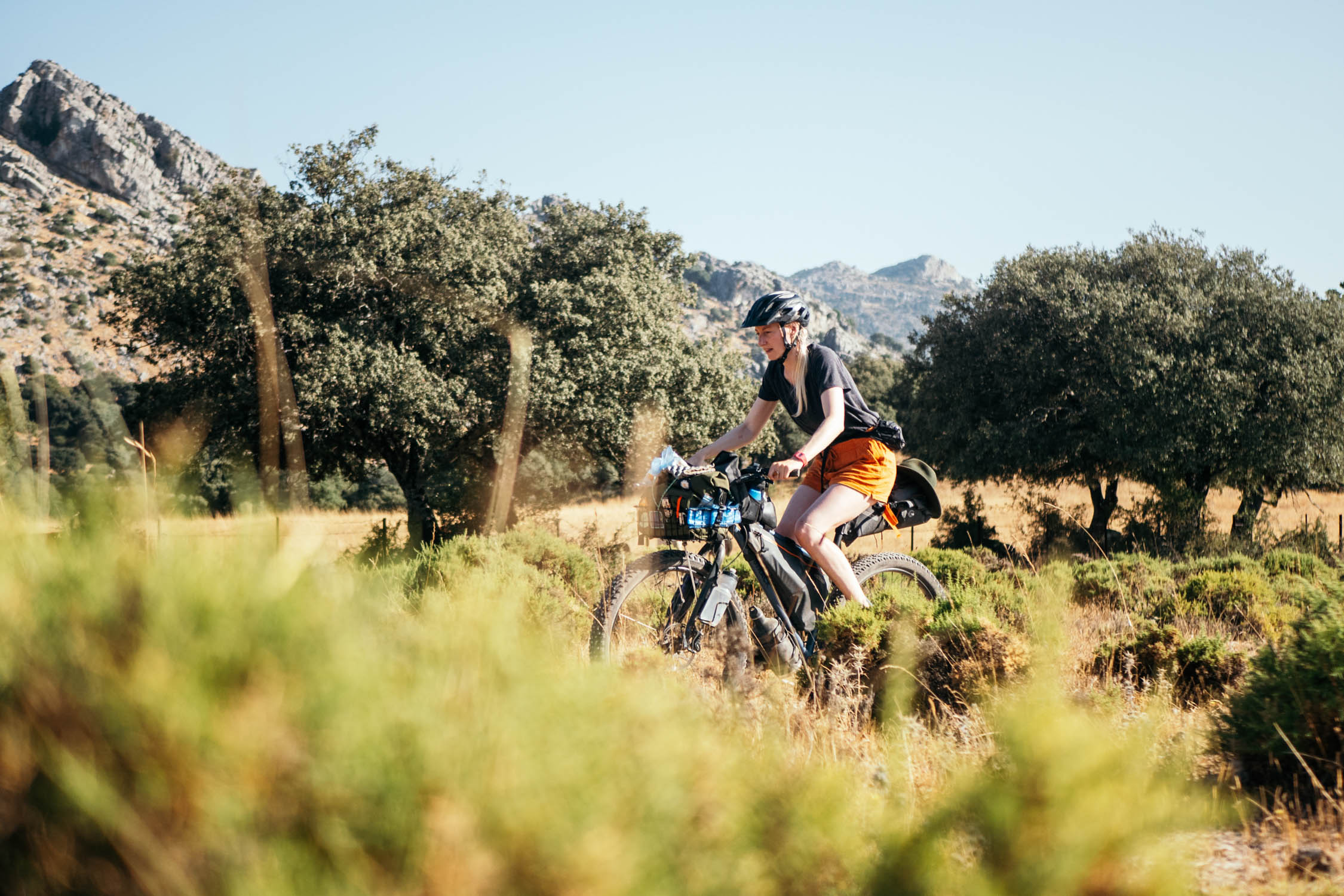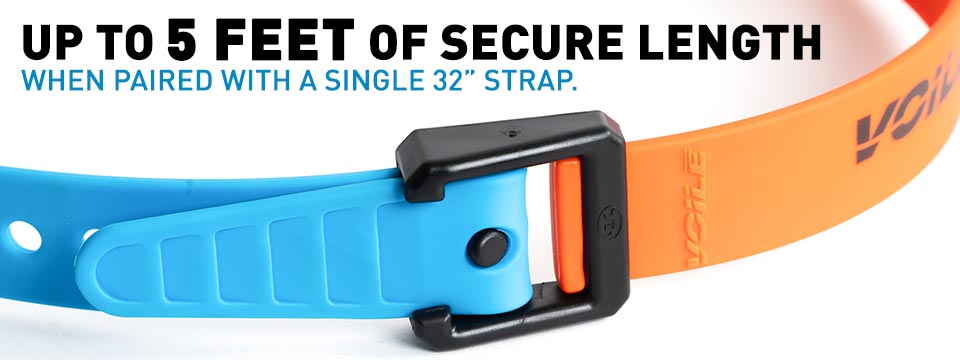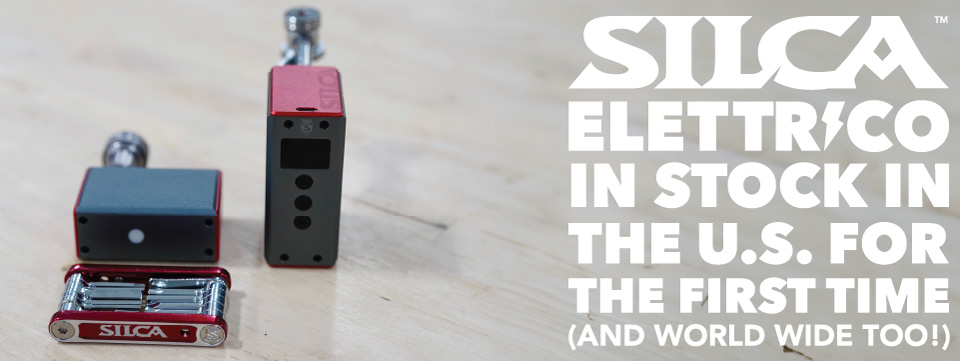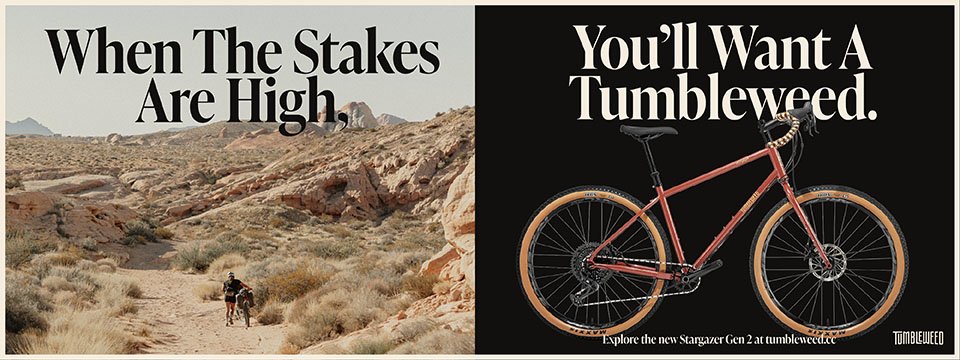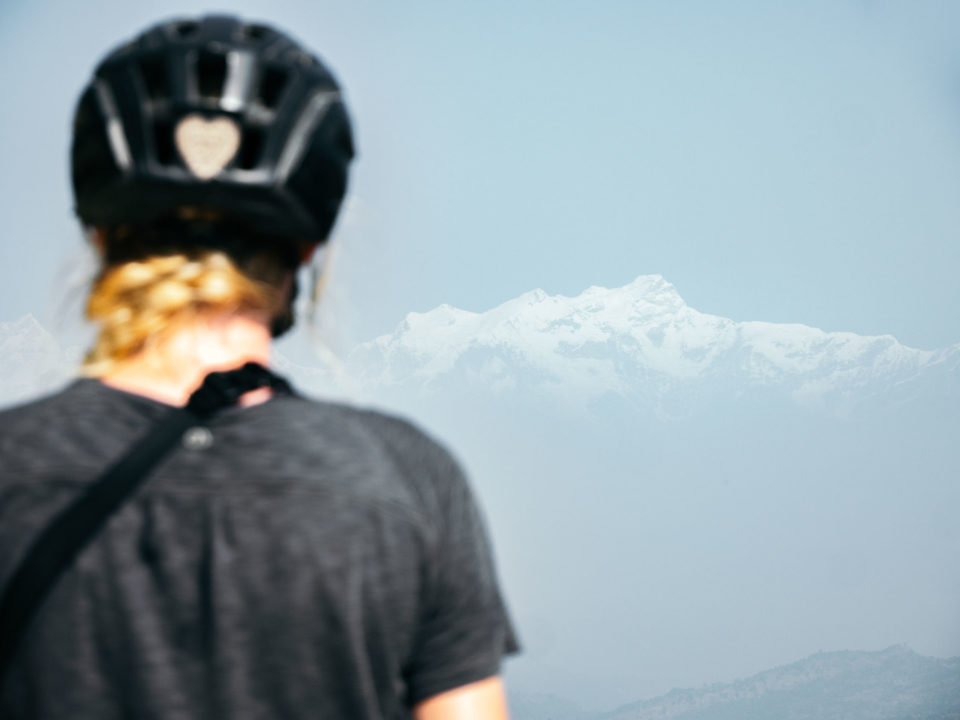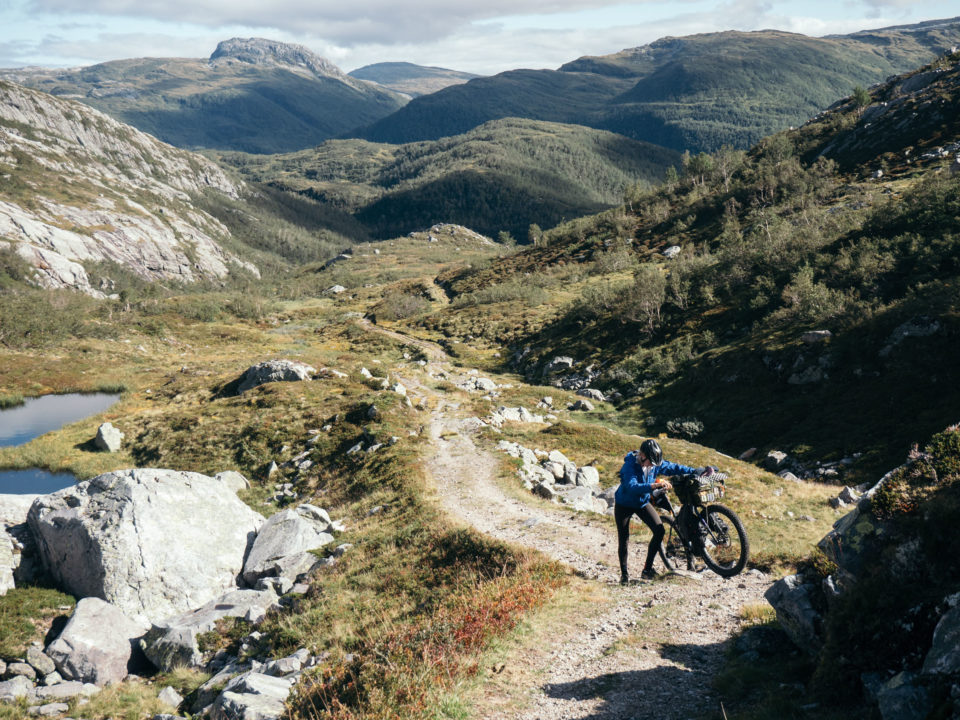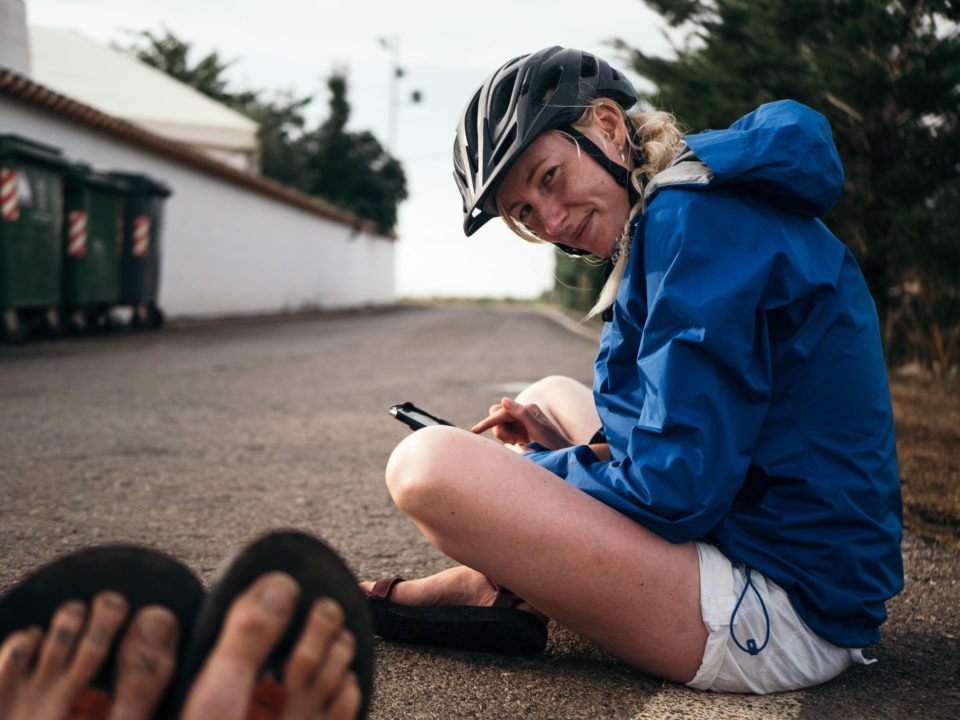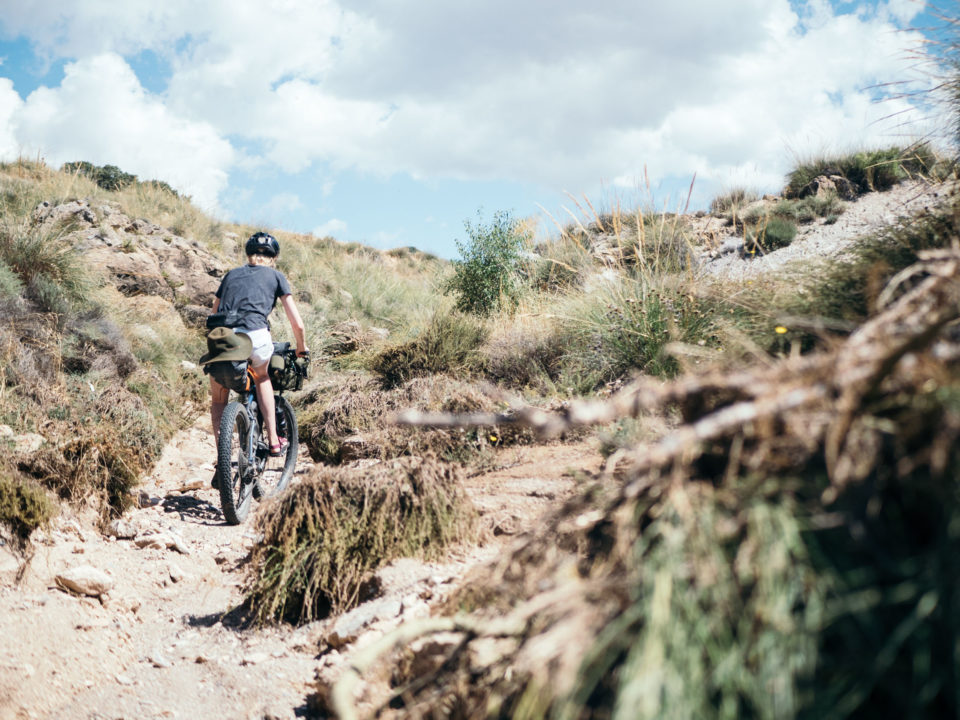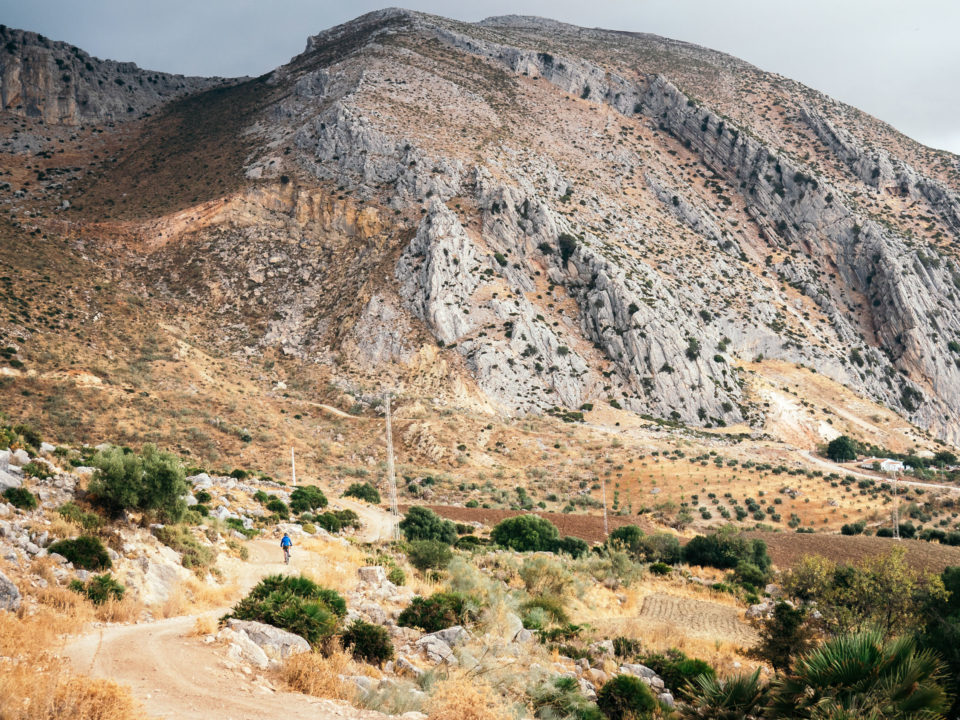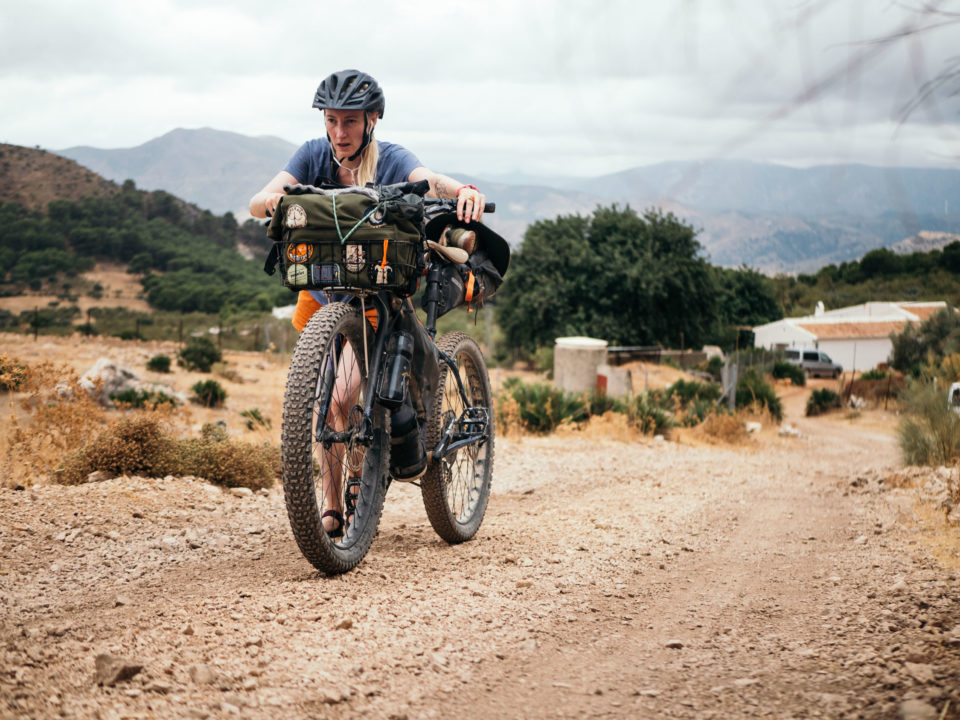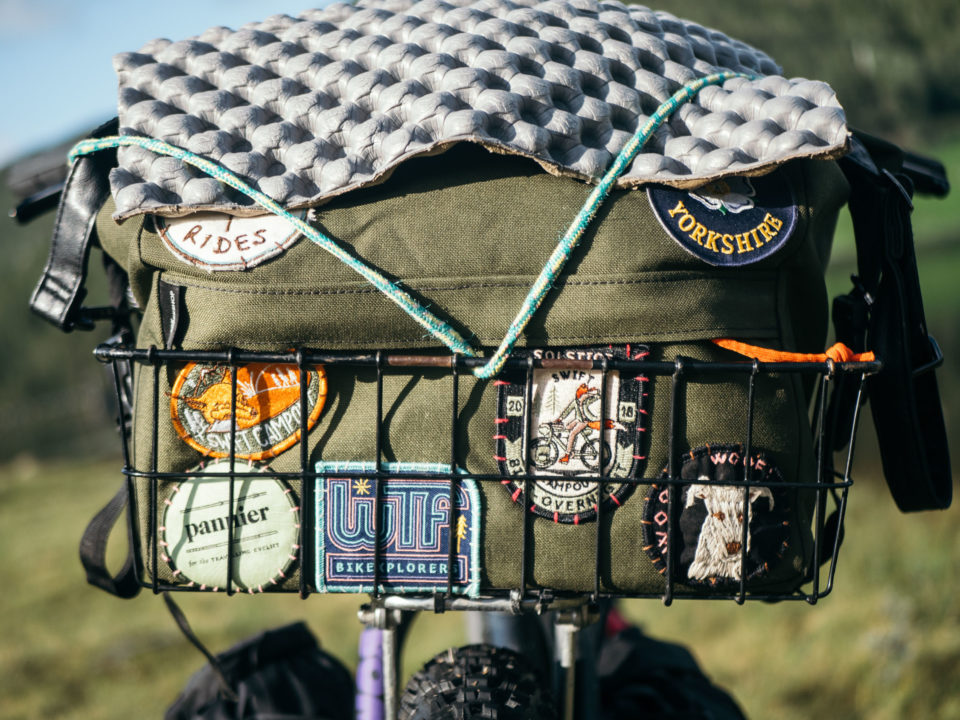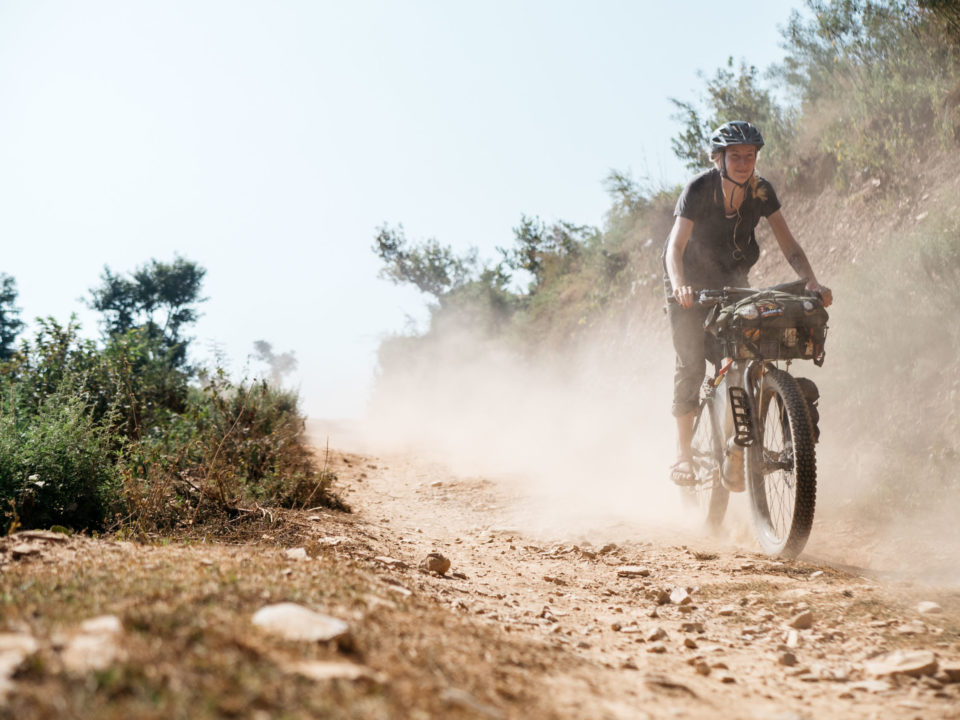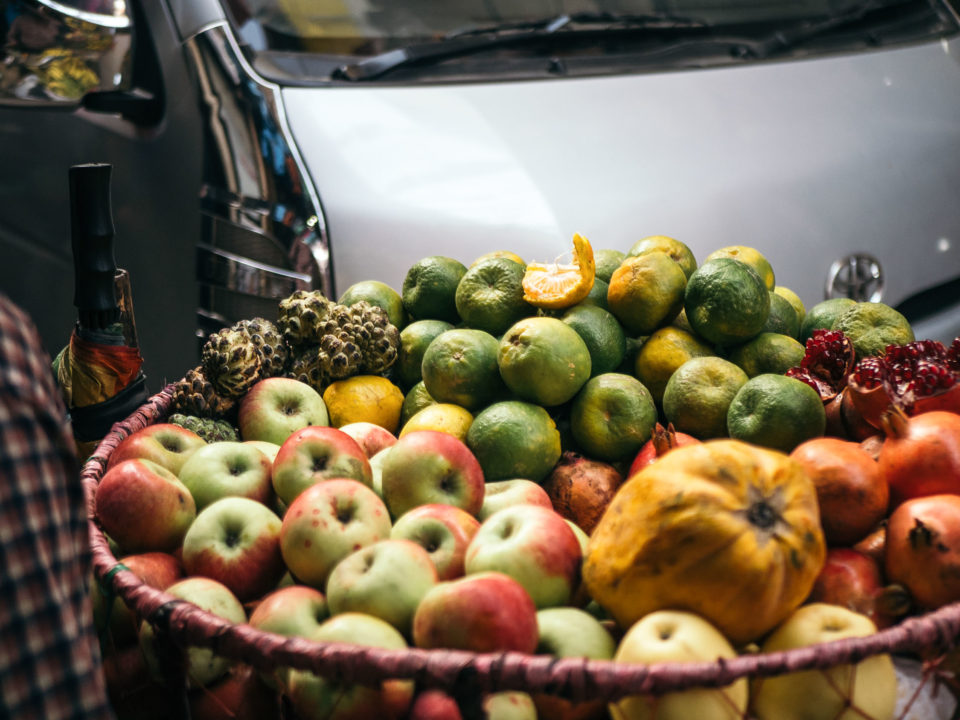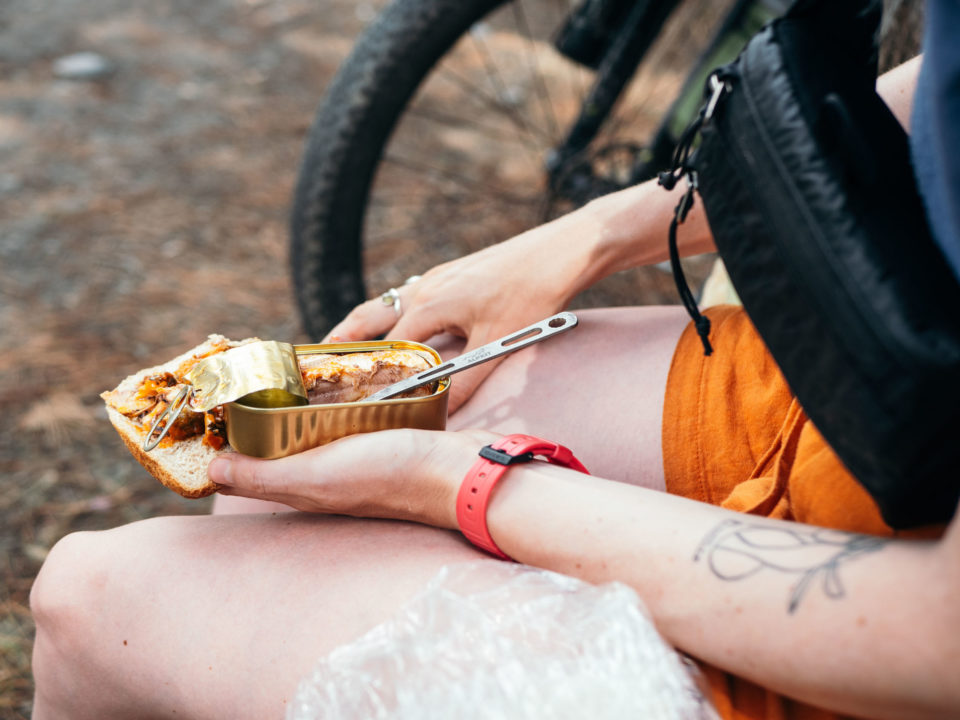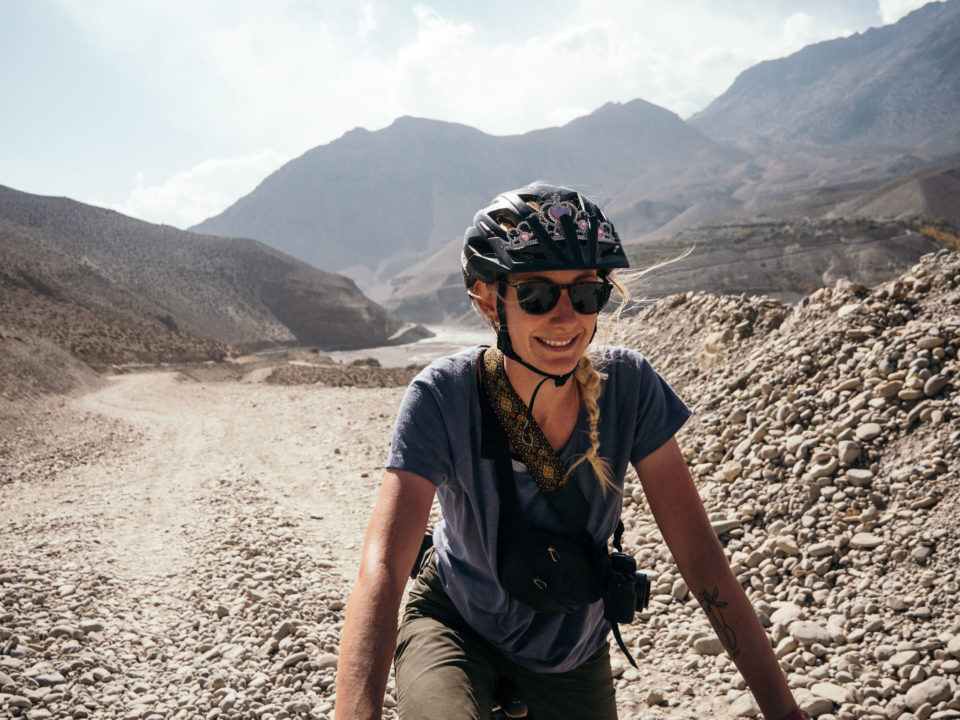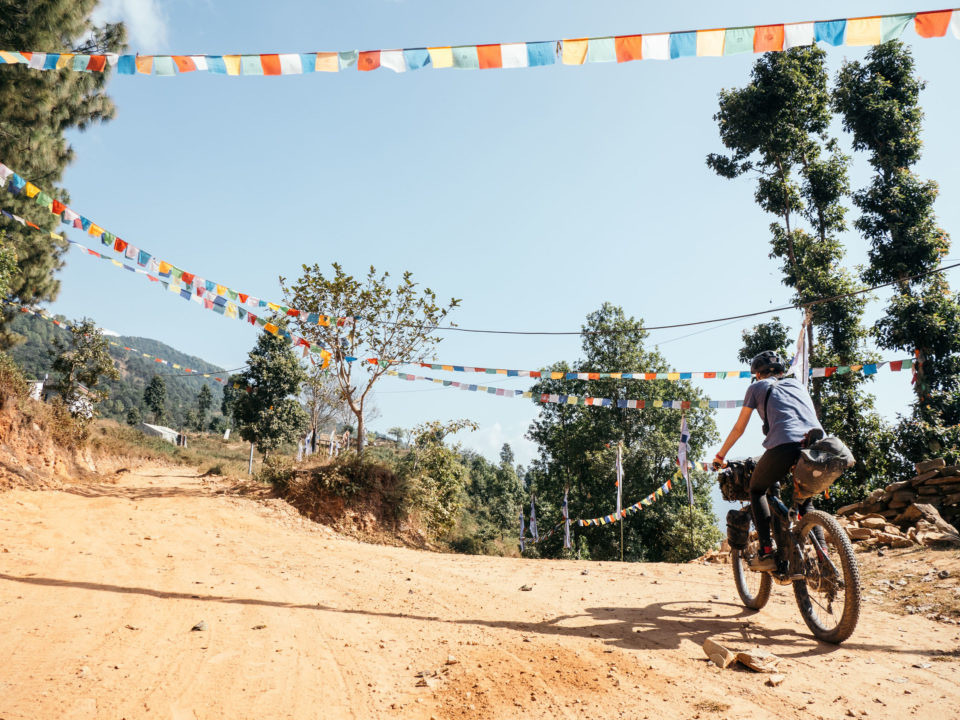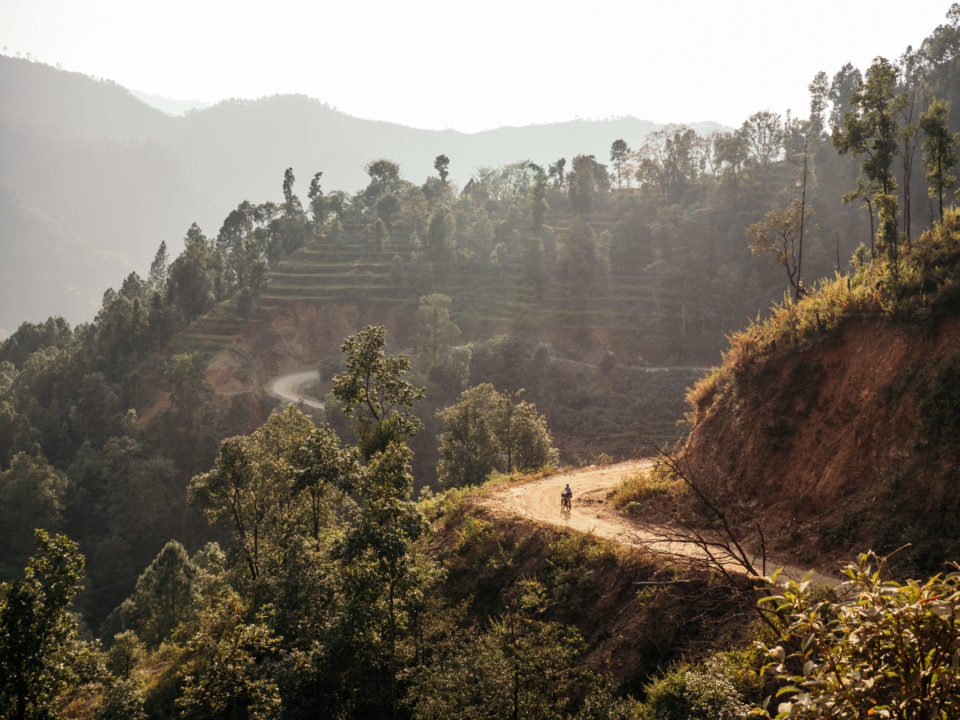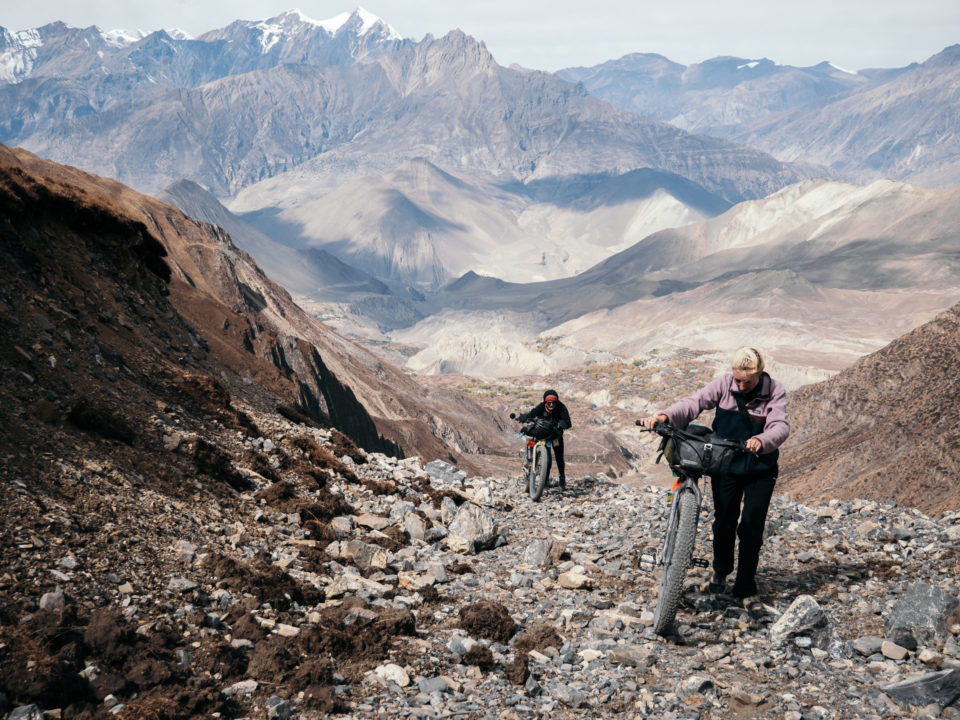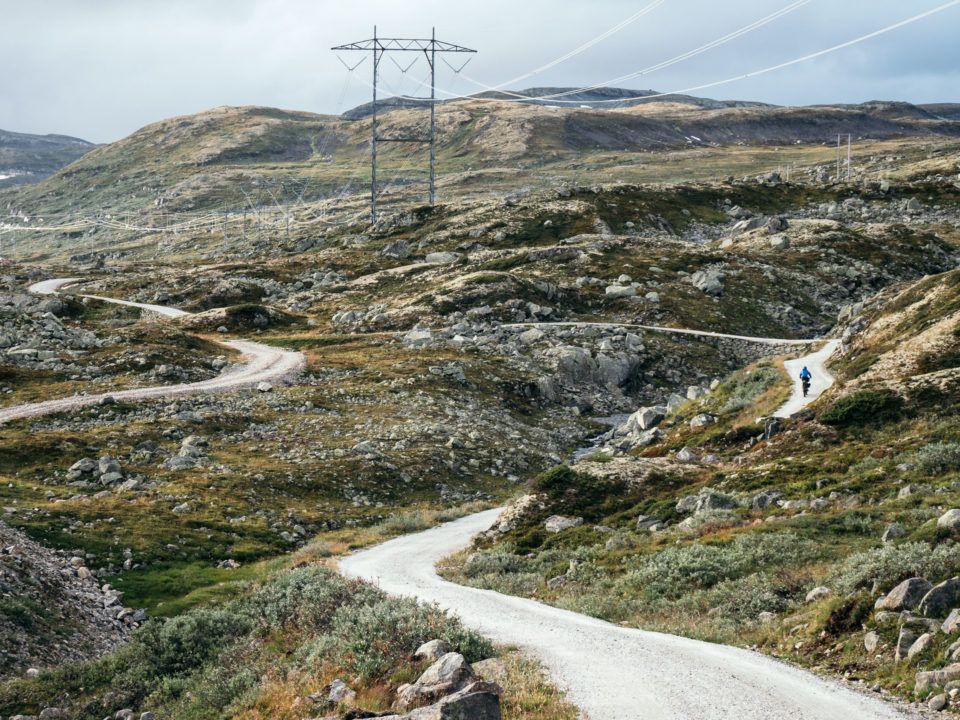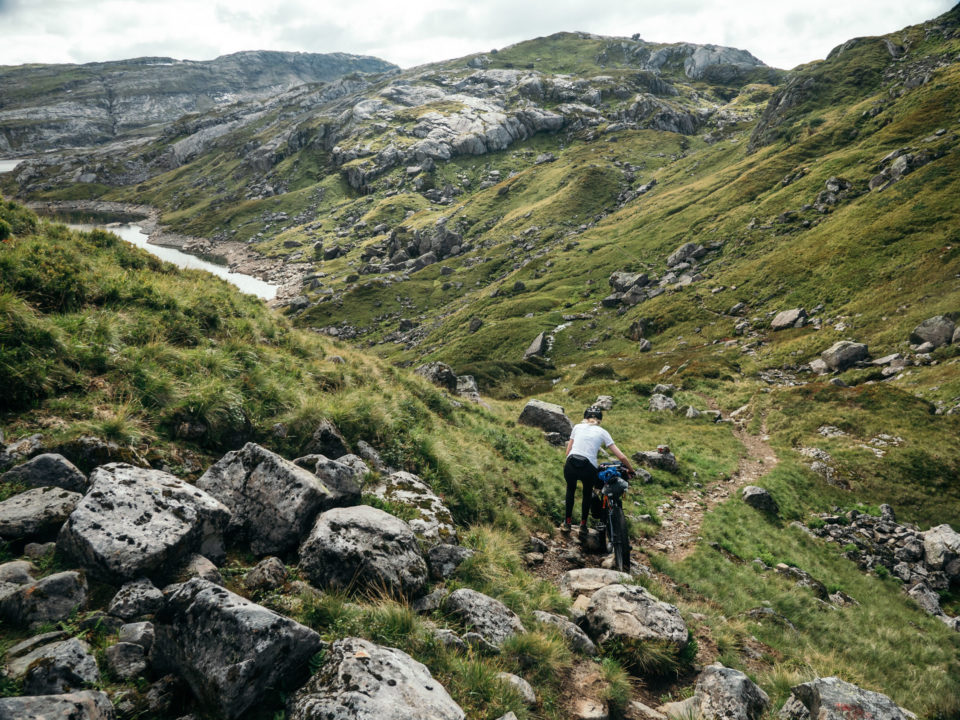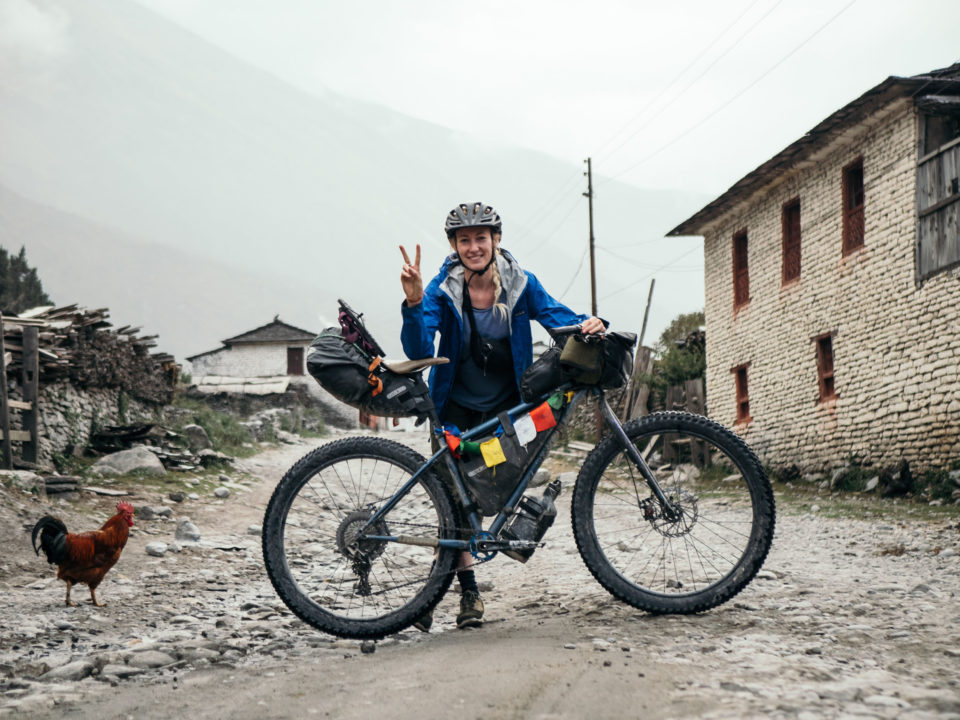Bumbling Through Bikepacking: A Beginner’s Perspective
Seeking a change in her daily routine, and inspired by the many other women who are out on extended bikepacking trips, Clare Nattress quit her job and left on an open-ended trip around the world. Now, after three months on the road in beautiful and challenging places like Norway and Nepal, she shares some thoughts on what she’s learned along the way, and offers some advice for other new bikepackers…
PUBLISHED Dec 7, 2018
Words by Clare Nattress (@thetouringartist), photos by Matty Waudby (@getwildmatty)
Bikepacking is a relatively new concept for me, despite the fact it has been around as long as people have been riding bikes. It combines the best of mountain biking with the basic principles of long-distance backpacking. It interests me as it fits in with my minimal lifestyle, is an efficient and environmentally friendly way to travel, and also allows you to experience countries in the most raw form, venturing down paths you would have never gone down and meeting people off the beaten tourist track.
After seven years of studying and four of lecturing, I was turning 30 and and reached a point in my life where I needed a creative resurgence. I needed to become curious again. My identity and energy had gone into my enthusiastic students, and I had lost all ambition and zest for my own arts practice and research. Travel felt like my only option to rekindle this, to awaken my senses. But travelling by bike was a daunting new venture.
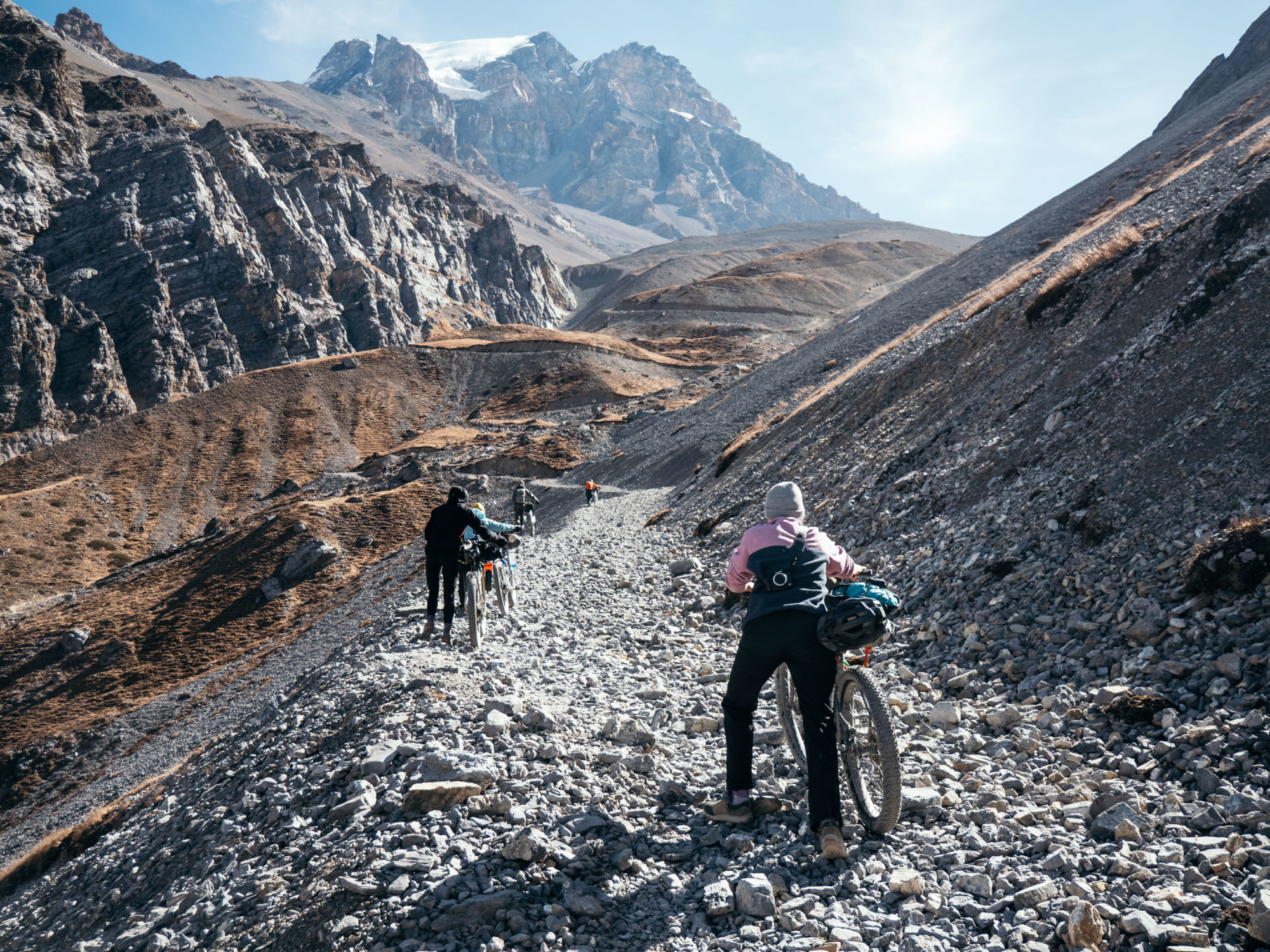
Thankfully, I was in the best hands. My partner Mat Waudby has been on some beautiful journeys across Europe and Tasmania by bike, and he has been a wealth of knowledge for a beginner like me. And then there’s the powerhouse hub of women on social media, my fellow gravel travel buddies, who have inspired me with their passion for bikepacking, incredible determination to do the gnarliest stuff, and their knowledge of routes and equipment. Without cyclists like Franzi Wernsing (@talesontyres), Eileen Schwab (@eileenschwabnz), Emma Cornelis (@ecornelis), Jen Burton (@theslowrace), Pepper Cook (@bookbikebrew), and countless others, I wouldn’t have had the confidence to venture into a fairly intimidating community. Not intimidating because the people involved, but intimidating due to having no knowledge of bikes, camping, maps, equipment, or cooking outside. Any of it, to be honest.
Now, three months into my bikepacking experience, I’m writing this in the foothills of the Himalayas in Nepal, having just completed the Annapurna Circuit by bike “the wrong way around.” My beloved Bombtrack Beyond+1 and I achieved the most thrilling, terrifying, albeit exhilarating experience of my life, reaching 5,416m by bike. Having just recovered from altitude sickness and general exhaustion, this reflection on the type 2 fun that we’ve just conquered has left me feeling like I can do anything by bike. Two years ago, when I was just starting to ride, I found hills a real chore, pedalling more than 30km tough going, and I couldn’t tell you what a bottom bracket was. I’d like to try to explain how my knowledge has significantly improved with the aim of inspiring new bikepackers, especially women, to join this wonderful community.
Choose Your Own Adventure
The best advice I’ve been given as a beginner is to go at your own pace. Never try to keep up with fellow riders if it’s beyond what you can do. Trust your instincts. You know what is too much for your current ability. Usually, other riders will have built up a greater stamina over several years and will be far beyond the beginner stages of riding. In group rides, I’m always at the back embracing the slowness but in full confidence that I will finish the route with a smile on my face. The majority of what I have experienced while riding over the past three months has been more of a mental challenge than a physical one. It tends to be your mind telling you that the hill is too big, or the end is too far away, or a pint sounds good, rather than your body giving up.
Once you’ve ridden at elevation for the first time, it becomes a string in your bow. You can then use it as a reference point for what you have previously achieved and keep building and challenging upon it. Of course, it doesn’t happen overnight, and it took me two years of riding to feel confident enough to launch myself into the Annapurna Circuit (still an idiotic decision), to ride from Gibraltar to Madrid through the Sierra Nevada, and to pedal from Oslo to Bergen. All of these countries have high elevation and damn hard hike-a-bikes.
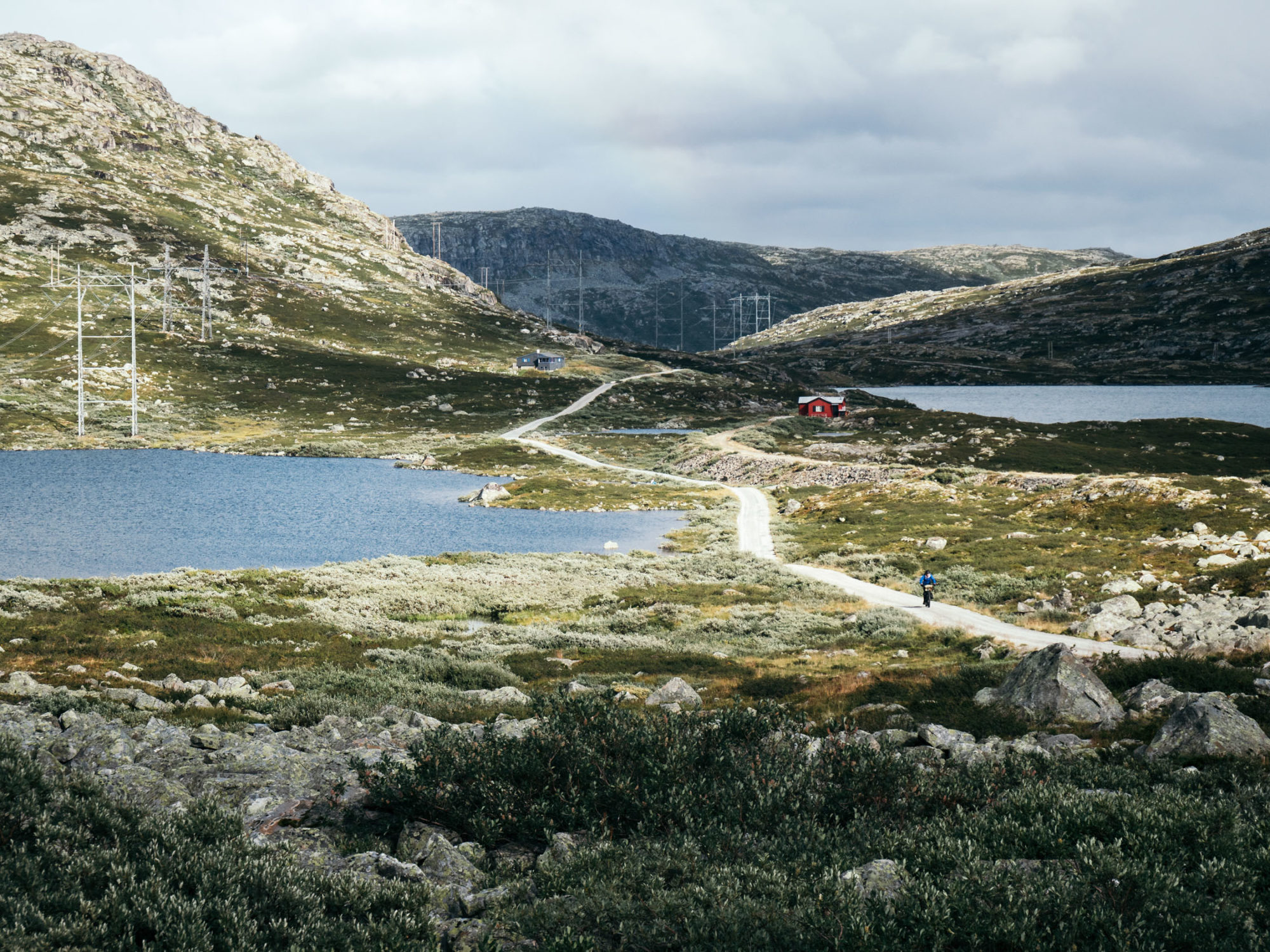
Less Is More
Travelling light is also super important. It sounds obvious, but you’ll still end up carrying too much stuff at first, no matter what. Food and water are weighty, and they’re the most essential things you’ll need. My solar panel got the boot after seeing little use even in sunny Spain, as my Anker battery pack was so much faster and easier to pack away. When you’re pushing your bike or indeed carrying it up rocks, you’ll wish that your dry shampoo spray can and hefty sketchbook weren’t on your bike. Doh!
Minimal bikepacking bags also help reduce weight and pack essentials tidily away. I have Ortlieb waterproof bags – a front handlebar bag, frame bag, and saddle bag – that are perfect to keep items dry while still allowing easy access. I also have a Revelate Designs feed bag attached to my handlebars, a camera bag so I’m always ready for quick shots, a basket bag, and a top tube bag. I carry minimal clothes: two tops, two leggings, two sets of socks, two pairs of shoes (sandals and trainers), a fleece, a down jacket, a rain shell, a pair of gloves, a hat, and no padded shorts. Shock! Horror! Your butt gets used to it, and padded shorts can become gross very quickly. They also take forever to dry when washed.
Our shelter is a Tarptent Stratospire 2 named Sid, and it’s a gem. It has a generous amount of living and vestibule space for two people, which is perfect for extensive gear and day to day storage, and it’s relatively lightweight at 1.3 kg. It fits alongside bulkier clothes in my Ortlieb saddle bag, and packs down to around 16 in x 4 in. It’s also pretty stealthy for hiding out of view on evenings when we’re wild camping. The main factor I love about the Stratospire 2 is that I can actually pitch it without help. It’s super simple for one person to do without needing others to hold it in place for you, which makes setting up camp after a long day of riding that much easier.
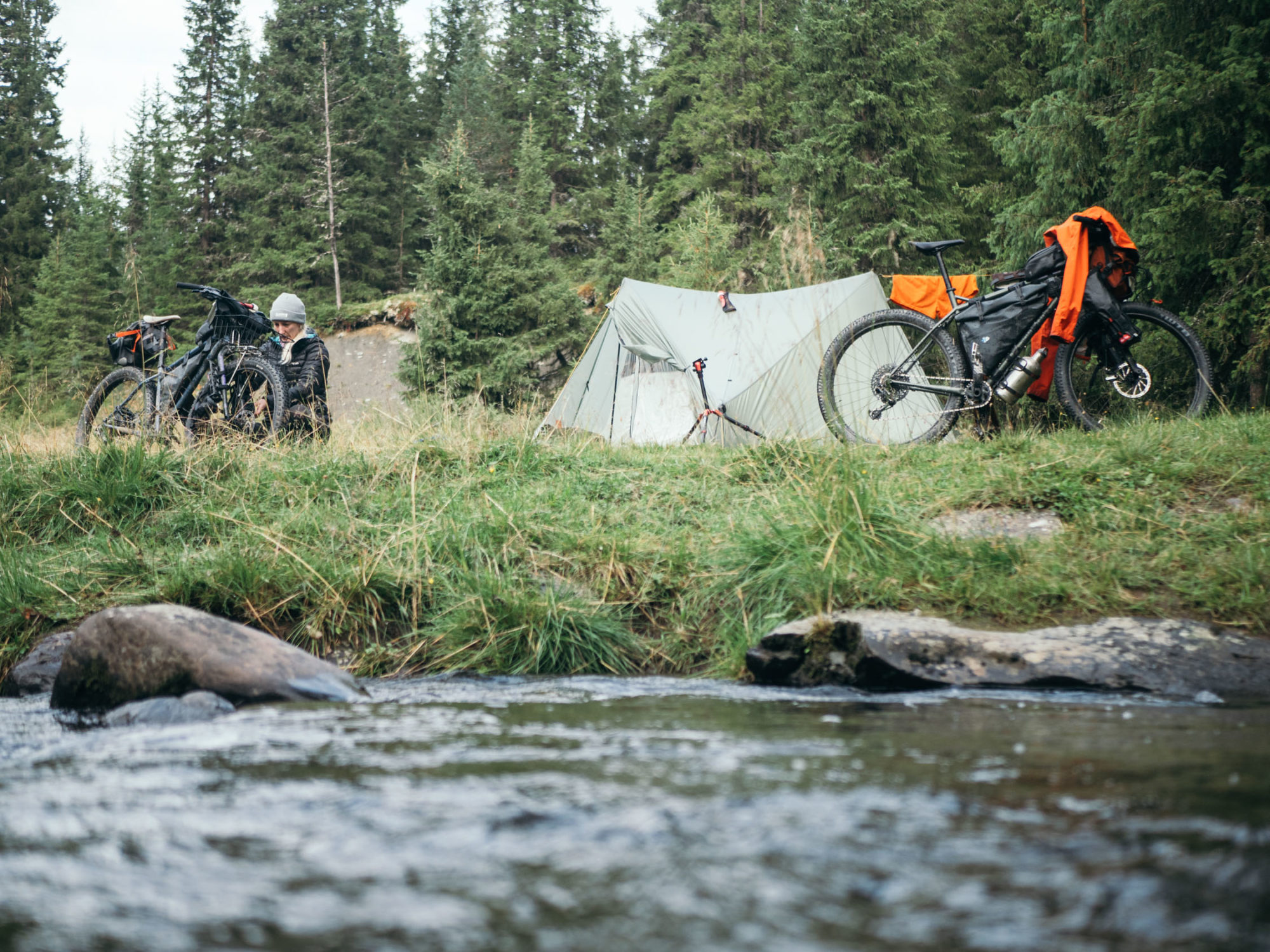
Diet
I think it’s also important to mention my diet, something I have become increasingly aware of when riding. Personally, I don’t use energy gels, as they don’t really agree with my gut and I like to eat foods that are rich in good fats to help maintain stamina. Foods like avocados, nuts, bananas, fish, eggs, and rice. Diet is everything, especially if you’re built like a whippet like me and you need to maintain your weight to look relatively healthy. Cycling long distances is great cardio, but can also make you lose weight pretty fast unless you eat the right snacks and meals.
Before I set off on this trip, I had a larger intake of calories per day so I could try to bulk up a little, taking into consideration what I was losing when commuting to work by bike. I actually had the same daily intake as Chris Hemsworth had to bulk up to play Thor! It’s crazy how many calories you burn over a day of pedaling, so being aware of this and trying to replace them accordingly was an important element for my trip. And when drinking up to four litres of water each day, I like to drop a vitamin C tablet into one of my bottles to help give me some natural salts and vitamins for extra energy. It’s been working so far, and has reduced fatigue, which is very important if you have 20 km to go before a cracking wild camp spot!
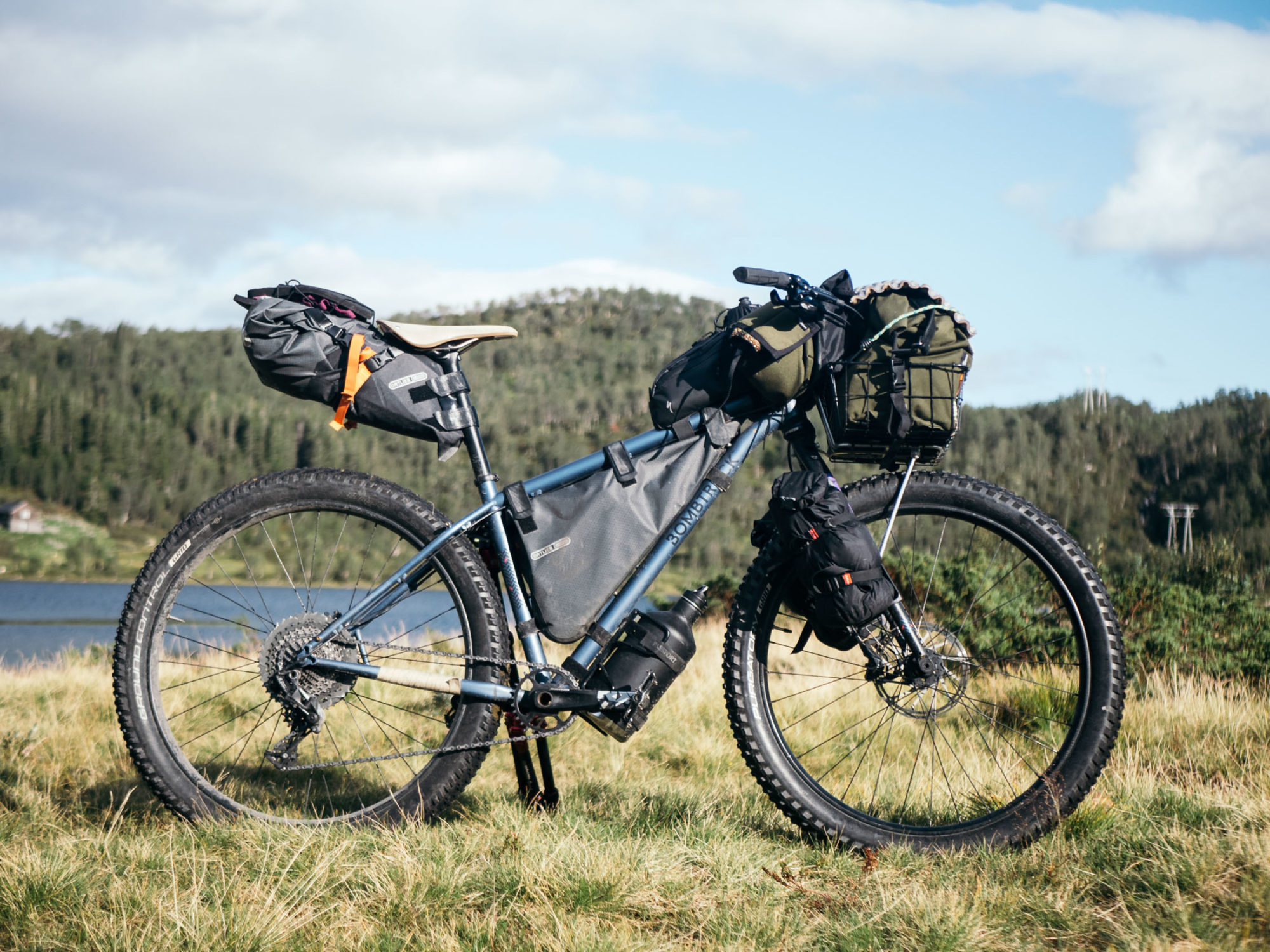
Bits and Bobs
Knowing your bike is crucial. It’s something that has taken me a while to learn the intricacies of, and I still don’t know it all. My Beyond+ 1 is an expedition machine, solid and bombproof. It is pretty much a bikepacker’s dream because it has multiple mounting options for front and rear racks, meaning you can swap and change how its set up to what suits you. It’s strong and light, with my medium size weighing just 12.5 kg. I feel extremely stable and comfortable when riding rocky downhills, even when fully loaded. I have changed to a Brooks saddle for optimum comfort, switched to On-One Mary bars to suit my riding position, and upped my tires to 27.5+ to shred on the downhills. I swapped out the chainring to something smaller for Nepal so I could tackle the elevation without crying, as I knew we would be going uphill for weeks on end. The more you ride, the more you’ll get to know it like an extension of yourself. You’ll get a feel for what’s working, what feels slightly off or clunky, what that noise might be, and when bearings need to be changed.
Navigation and Route Planning
The last big piece of the puzzle is mapping and route planning. It’s something I’m still learning. Having sifted through numerous apps, all having their pros, but somehow never include all of the key aspects that I need. This trip hasn’t really been about distance for us, but we typically like to know our day’s elevation profile, perhaps just to mentally prepare for what we are about to pedal. It’s helpful for a mapping app to allow you to draw a route from A to B, show a detailed elevation profile with contour lines, a clear distance, and the expected surface types. Also, having these maps available offline is essential when in countries like Nepal with limited wifi services, especially when out exploring the mountains. Syncing from your phone to your Garmin is also useful for backup if you run out of battery. Most are relatively easy to use and follow along. I have taken more of a proactive lead in route planning recently, as it can be dangerous leaving it up to Mat. I learned pretty fast that my days were going to be gruelling if I did! These days, I like to suggest alternatives.
Wrap Up
Learning about diet, mapping, camping, gear, and your bike is an ongoing process. Constantly talking to and sharing knowledge with other cyclists has helped me to test out new kit and form my own opinions. It’s a learning-by-doing process, comparatively similar to the nature of arts practice. Bikepacking is a super rewarding, fun, and freeing adventure that everyone should try. Hey, if I can do it, anyone can!
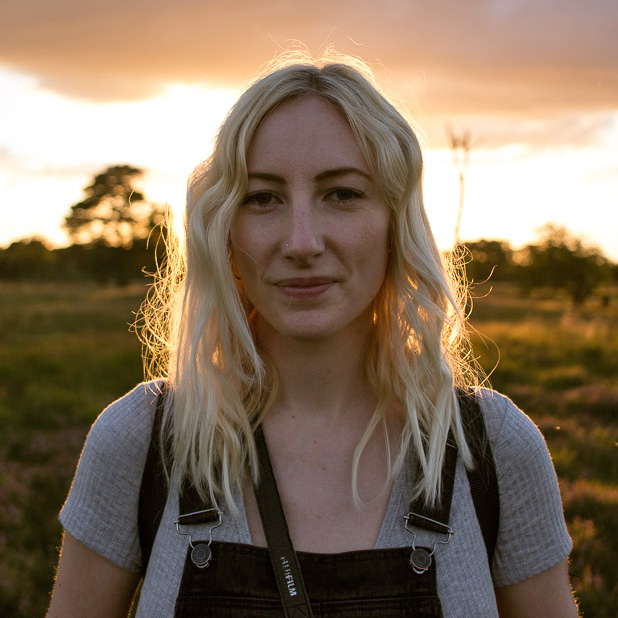
About Clare Nattress
Clare Nattress is an artist, educator, and gallery curator from York, UK. Her works encompass performance, photography, bookmaking, printmaking, sculpture, and installation. In 2018, Clare quit her lecturing job, sold all of her possessions, and set off to pedal places of the world by bike. She writes about her travels regularly at Clare-Nattress.com and posts photography on Instagram @thetouringartist.
Please keep the conversation civil, constructive, and inclusive, or your comment will be removed.







